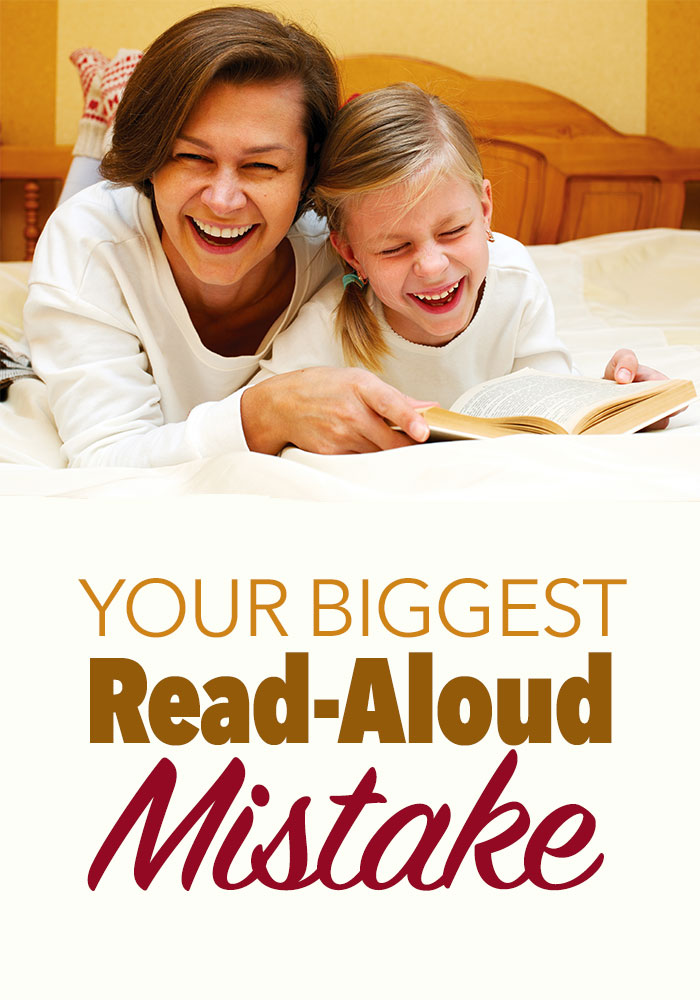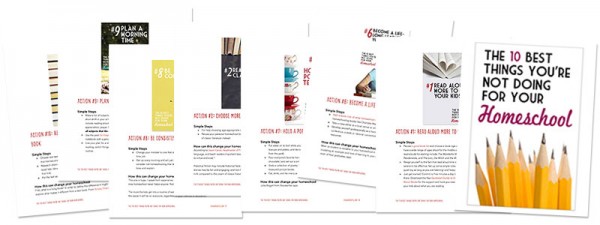
When she was six, my daughter told me she didn’t want to learn to read because then I might stop reading to her.
Nothing could be further from the truth, but then six-year-olds aren’t known for their logic, are they?

Lucky for her it wasn’t too long after that I stumbled upon Andrew Pudewa’s talk, Nurturing Competent Communicators.
(Go get that talk and listen — it’s free and you can thank me later.)
Pudewa postulates a number of great points in that talk, not the least of which is the biggest mistake you may be making when reading aloud to your children. No, it’s not the accents you butcher; they really don’t mind that.
You can listen or read more.
The key is language patterns
The crux of Nurturing Competent Communicators is that children need to be exposed to “reliably correct and sophisticated language patterns.” Let’s think about this for a few minutes. What language does your child hear on a regular basis?
- Conversations with peers about their favorite video games or each other.
- Dialogue from the TV shows he might be watching.
- Lectures and admonishments from you for him to pick up, hurry up, brush his teeth or find his shoes.
- Knock-knock jokes. Kids are always telling knock-knock jokes.
Sure, there are lessons and the occasional dinner-time conversation, but let’s face it: sophisticated is not how we would describe most of the language our children are exposed to.
That’s where the reading aloud comes in. By reading to our children we are exposing them to those sophisticated language patterns on a regular basis. They internalize them and begin to use the patterns not only in their own conversations, but also in their writing as well.
Yet so many of us feel like we are off the read-aloud hook once our children are able to read for themselves. “Whew!” we express as we wipe the well-earned sweat from our brow. That obligation has passed.
But this is where we go wrong.
Don’t make this vital mistake
This is the time that we should actually be reading to our children more and not less. This is the time their vocabulary is growing, becoming more sophisticated, and their reading level is just not on-par with the quality of what they are able to comprehend.
A seven- or eight-year-old boy might not be able to read The Hobbit on his own, but he is certainly capable of understanding it and benefiting from Tolkien’s use of language in a big way. Why force him to wait until eleven or twelve to get those benefits?
Your children will always be able to understand works above their current reading level. And reading to your teens adds the opportunity for good discussion about tougher subjects in literature as well. So just don’t stop.
Resources for reading aloud
I recently chatted with a group of moms about this very thing over on the Homeschool Snapshots Show on Periscope. The beautiful thing about community is that we can crowd-source ideas together. Below is a collection of the books the community brainstormed during that ‘scope.
These are all recommended read-alouds for children from 5 to 50. The list is ordered from youngest to oldest in recommended reading age — the books at the top for younger children on down to selections for older ones at the bottom.
At the very bottom are audio books by recommended narrators. Not to be missed is the link to The Chronicles of Narnia read free by Dr. Chrissi Hart. Don’t underestimate the value of audio books for building those language patterns as well.
My daughter is now ten and reads to herself quite well these days. I haven’t stopped reading aloud to her, though. We do it multiple times in a day, and she always drifts off to sleep to her favorite audio books.
A knock-knock joke may still be one of her favorite ways to communicate, but I am not worried about those language patterns at all. We’ve got this — one read-aloud at a time.
The Books
Jenny and the Cat Club: A Collection of Favorite Stories about Jenny Linsky (New York Review Children’s Collection)The Wonderful Wizard of Oz
The Growly Books: Begin (Volume 1)
The Boxcar Children (The Boxcar Children, No. 1) (Boxcar Children Mysteries)
Little Pear (Odyssey Classics (Odyssey Classics))
James and the Giant Peach
The Chronicles of Narnia Box Set: The Magician’s Nephew; The Lion, the Witch and the Wardrobe; The H
Owls in the Family
Charlie and the Chocolate Factory
The Original Adventures of Hank the Cowdog
Winnie-the-Pooh (Puffin Modern Classics)
Tales from the Odyssey, Part 1
Tales from the Odyssey, Part 2
Charlotte’s Web (Trophy Newbery)
Stuart Little
The Indian in the Cupboard
The Prairie Thief
The Trumpet of the Swan (full color)
The Story of Doctor Dolittle
The Railway Children (Puffin Classics)
Peter Pan
Alice’s Adventures in Wonderland & Through the Looking-Glass (Bantam Classics)
Five Children and It (Puffin Classics)
Harry Potter and the Sorcerer’s Stone
Anne of Green Gables
The Adventures of Tom Sawyer
Shadow Spinner (A Jean Karl Book)
The Hobbit: An Illustrated Edition of the Fantasy Classic
The Wonderful Wizard of Oz
[Unabridged] [Audible Audio Edition]“>The Wonderful Wizard of Oz [Unabridged] [Audible Audio Edition]
Little House In The Big Woods Unabr CD Low Price (Little House-the Laura Years)
The Lord Of The Rings
A. A. Milne’s Pooh Classics Boxed Set
Harry Potter and the Sorcerer’s Stone (Book 1)
Best Things Free eBook
This conversation is part of the Ten Best Things You’re Not Doing in Your Homeschool series. Now you can get the Ten Best Things as an ebook absolutely free. Click to get your copy today!
- How to Transform Math Lessons without Changing your Curriculum with Denise Gaskins - April 26, 2024
- Homeschooling Boys with Durenda Wilson - April 12, 2024
- What About Lab Sciences? with Dr. Moon - March 29, 2024


